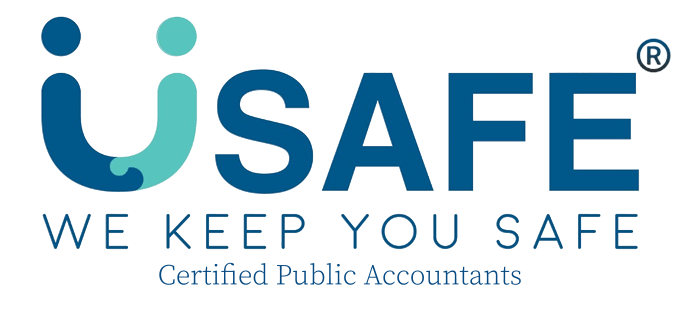📘 FRS 18 (Presentation and Disclosure in Financial Statements): A Complete Guide for Singapore Businesses
Singapore, October 2025 — The Accounting Standards Council (ASC) has officially adopted FRS 18, aligning Singapore’s standards with the International Financial Reporting Standards (IFRS 18) issued by the International Accounting Standards Board (IASB).
This major standard, effective for reporting periods beginning on or after 1 January 2027, will fundamentally reshape how companies present their financial performance. Importantly, early adoption is permitted, allowing firms to prepare ahead.
Unlike previous frameworks, FRS 18 introduces clear income and expense categories, mandatory subtotals, and structured disclosure requirements. As a result, financial reports will become more comparable, transparent, and investor-friendly.
🔍 1️⃣ Understanding FRS 18 and Its Purpose
The introduction of FRS 18 replaces key presentation rules under FRS 1 (Presentation of Financial Statements). Its objective is to make financial statements more consistent and informative for both investors and regulators.
Under the new standard, entities must:
-
Categorise income and expenses into Operating, Investing, and Financing sections.
-
Present specific defined subtotals such as “Operating profit or loss.”
-
Disclose Management-Defined Performance Measures (MPMs), supported by reconciliations and explanations.
-
Apply aggregation and disaggregation principles for greater clarity.
By implementing these changes, companies will enhance not just compliance but also stakeholder confidence.
📊 2️⃣ Categorising Income and Expenses
Under FRS 18, every income and expense must fit within one of three main categories in the statement of profit or loss:
| Category | Description | Examples |
|---|---|---|
| Operating | Relates to the entity’s primary business activities | Revenue, cost of sales, administrative expenses |
| Investing | Involves income or expenses from investment activities not part of core operations | Dividends, associate profits, gains or losses on investments |
| Financing | Represents activities for raising or servicing capital | Interest expense, lease finance charges, borrowing costs |
Moreover, if investing or financing forms part of your core business (for example, banks or investment firms), those items can be classified as operating.
Therefore, preparers must carefully review account structures and ensure no “miscellaneous” or “other” line items remain unclassified. Clarity now helps prevent audit disputes later.
📈 3️⃣ Required Subtotals and Statement Structure
To promote comparability, FRS 18 mandates specific subtotals in the profit or loss statement, including:
-
Operating profit or loss
-
Profit or loss before financing and income taxes
-
Profit for the year
These subtotals help users analyse operations independently of financing decisions.
Illustration:
Consequently, users can now more easily distinguish between operational efficiency and financial structure.
💡 4️⃣ Management-Defined Performance Measures (MPMs)
In addition, FRS 18 introduces Management-Defined Performance Measures — subtotals that management communicates externally, such as “Adjusted EBITDA” or “Core Profit.”
Each MPM must be:
-
Explained clearly, including why management considers it useful.
-
Reconciled to the nearest IFRS subtotal, such as “Profit before tax.”
-
Presented consistently from one period to the next.
This requirement ensures stakeholders understand how internal performance metrics link to the audited results. In turn, it strengthens confidence in management transparency.
🧩 5️⃣ Aggregation and Disaggregation
Another key principle under FRS 18 is balance — financial statements must not be overly summarised or cluttered.
Entities should aggregate similar items 和 disaggregate material differences. For example, instead of showing a single line “Other Expenses,” firms should break down significant elements like “Marketing,” “Research,” or “Depreciation.”
Moreover, additional explanations in the notes should describe how items were grouped. This approach enhances both clarity and accountability.
🔁 6️⃣ Transition and Retrospective Adjustment
Transition to FRS 18 will be retrospective. Businesses must restate their comparative figures as though the new structure had always been applied.
Effective Date and Adoption
-
Applicable to periods beginning on or after 1 January 2027.
-
Early adoption permitted with full disclosure.
What This Means
When adopting retrospectively, you must:
-
Reclassify prior-year income and expenses under the new categories.
-
Recalculate new subtotals such as “Operating profit.”
-
Restate comparative disclosures to reflect the new presentation.
-
Explain reclassifications in the notes, confirming that profit and equity are unaffected.
Example Disclosure:
“The Group applied FRS 18 retrospectively for the year ended 31 December 2027. Comparatives for 2026 were restated to reflect new income and expense categories, without impact on total profit or equity.”
As a result, companies will improve consistency across periods while maintaining data integrity.
🧭 7️⃣ Implementation Roadmap
To ensure a smooth transition, consider these practical steps:
-
Conduct a gap analysis comparing your current presentation to FRS 18 requirements.
-
Map all accounts to their new categories and identify any grey areas.
-
Update your accounting systems to capture operating, investing, and financing tags.
-
Redesign financial statement templates and internal reports.
-
Train finance staff and communicate upcoming changes to auditors and management.
Early planning will prevent last-minute confusion when the standard becomes mandatory. Furthermore, proactive communication with stakeholders fosters trust.
🏢 8️⃣ How USAFE Can Help
At USAFE, our experts have already begun guiding clients on FRS 18 implementation.
We provide:
-
Comprehensive readiness assessments and mapping exercises.
-
Financial statement redesign to meet presentation and disclosure requirements.
-
MPM disclosure templates and internal training for finance teams.
-
Support throughout audit and comparative restatement processes.
Our goal is to help you go beyond compliance — to produce financial statements that communicate real performance and insight.




